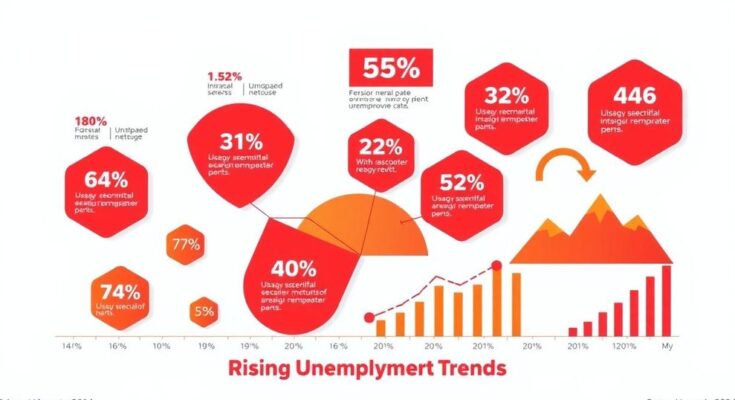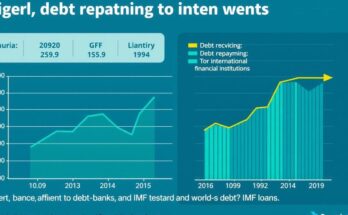Argentina’s unemployment rose to 6.4% in Q4 2024, with higher rates in Greater Buenos Aires. Job markets face heightened pressure, while tourism declines due to currency issues. Despite lowering inflation rates, economic activity remains stagnant, prompting the government to seek an IMF loan to stabilize reserves.
Argentina’s unemployment rate has increased to 6.4% in the fourth quarter of 2024, rising by 0.7 percentage points from 5.7% in the same quarter of 2023 and decreasing from 6.9% in Q3 2024. The National Institute of Statistics and Census (Indec) reported a higher unemployment rate in the Greater Buenos Aires area at 7.1%, while Patagonia recorded a lower rate of 4%. Notably, more women (6.9%) are experiencing unemployment compared to men (6.1%).
The report indicated that 72.5% of the unemployed have been without a job for less than a year, while 27.6% have been jobless for longer. Labor market pressure, which includes the unemployed, underemployed, and job seekers, has risen to 29.4%, marking a two-point increase from the previous year. Approximately 1.47 million individuals are currently unemployed in Argentina, which is 180,000 more than a year earlier.
In February 2025, hotel occupancy rates fell by 0.2% year-on-year, with a total of 1.97 million travelers. The appreciation of the local peso against the US dollar has rendered prices unattractive for foreign tourists, contributing to the decline. Domestic travel increased by 4.6%, whereas foreign travel decreased by 14.7%. Overnight stays in hotels totaled 5.6 million, a reduction of 1.2% compared to last year.
Buenos Aires province accounted for the highest share of overnight stays at 27.8%, with Patagonia following at 22.6%. The average duration of hotel stays was 2.8 nights, while parahotels saw an average of 3.4 nights. Popular travel destinations include Mar del Plata, San Carlos de Bariloche, and Villa Carlos Paz.
Under the leadership of President Javier Milei, efforts to contain inflation have shown some success, dropping from 211% in 2023 to 117% in 2024. However, sluggish economic activity persists due to declining Central Bank reserves and demands for US dollars. The government aims to secure an IMF loan by mid-April to stabilize reserves in light of ongoing economic challenges.
The economically active population in urban Argentina totals 14.5 million, out of which 13.6 million are employed. Almost one million individuals are unemployed but are actively seeking work. Among the unemployed, 71.2% have completed high school, while 28.9% have pursued post-secondary education without necessarily graduating.
The rise in Argentina’s unemployment rate to 6.4% highlights ongoing economic struggles, while the labor market displays increasing pressure. Despite efforts to manage inflation, challenges persist, particularly concerning the impact on tourism and foreign investment due to local currency fluctuations. The government’s proactive measures, including seeking external financial support, are crucial for stabilizing the economy and addressing unemployment.
Original Source: en.mercopress.com




